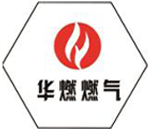
Dec . 04, 2024 16:29
Back to list
safety relief valve
Understanding Safety Relief Valves Importance, Functionality, and Applications
Safety relief valves (SRVs) are critical components in various industrial systems, serving the essential purpose of safeguarding equipment and personnel by preventing overpressure conditions. These devices are designed to automatically release excess pressure from systems, ensuring their safe operation and protecting them from potential failures.
The Importance of Safety Relief Valves
In many industrial processes, such as chemical manufacturing, oil refining, and power generation, systems operate under specific pressure conditions. If these pressures exceed designed limits due to equipment failure or operational issues, the results could be catastrophic – leading to explosions, equipment damage, or even loss of life. This is where safety relief valves come into play. By providing a reliable means to vent excessive pressure, they act as a fail-safe that mitigates risks and protects assets.
How Safety Relief Valves Work
Safety relief valves function by using a simple yet effective mechanism. They are typically spring-loaded devices that remain closed until the system pressure reaches a predetermined threshold. At this point, the force exerted by the media inside the system overcomes the spring tension, allowing the valve to open. This release of pressure continues until the internal pressure falls below the setpoint, at which point the valve reseals, preventing any further discharge.
There are two primary types of safety relief valves Safety Valves and Relief Valves. Safety valves are used primarily in gas and steam applications, while relief valves are more common in liquid service applications. Although they perform similar functions, the mechanisms of action and specific designs of these valves can vary to suit different applications.
Key Specifications and Standards
safety relief valve

Proper selection and installation of safety relief valves are paramount for their effectiveness. Key specifications to consider include the set pressure, which is the pressure at which the valve opens, and the blowdown, which is the difference between the opening and resealing pressures. Manufacturers and operators must also adhere to industry standards such as those set forth by the American Society of Mechanical Engineers (ASME) and the American National Standards Institute (ANSI), to ensure reliability and safety.
Maintenance and Inspection
Safety relief valves are not maintenance-free. Regular inspection and testing are necessary to ensure that they operate correctly when needed. This involves checking for physical wear, corrosion, and any signs of leakage. Many facilities adopt a preventive maintenance schedule to routinely test these valves, often utilizing procedures outlined in relevant standards to verify their functionality.
Applications of Safety Relief Valves
These valves find usage across a wide spectrum of industries. In the chemical industry, they protect reactors and storage tanks from overpressure. In oil and gas, they safeguard pipelines and processing equipment. Power plants utilize safety relief valves in steam and water systems to prevent devastating failures. Furthermore, even in consumer products, such as water heaters and pressure cookers, safety relief valves ensure that pressures do not escalate to dangerous levels.
Conclusion
Safety relief valves are indispensable in managing the risks associated with pressurized systems across various industries. Their ability to automatically release excess pressure is vital for protecting both equipment and human life. Hence, understanding their functionality, regular maintenance, and adherence to industry standards is crucial for anyone involved in operations where these valves are employed. By prioritizing the reliability and effectiveness of safety relief valves, industries can enhance their safety protocols and mitigate the risks associated with overpressure situations. As technology advances, we can expect further improvements in the design and operation of these essential safety devices, leading to even safer industrial environments.
Next:
Latest news
-
Safety Valve Spring-Loaded Design Overpressure ProtectionNewsJul.25,2025
-
Precision Voltage Regulator AC5 Accuracy Grade PerformanceNewsJul.25,2025
-
Natural Gas Pressure Regulating Skid Industrial Pipeline ApplicationsNewsJul.25,2025
-
Natural Gas Filter Stainless Steel Mesh Element DesignNewsJul.25,2025
-
Gas Pressure Regulator Valve Direct-Acting Spring-Loaded DesignNewsJul.25,2025
-
Decompression Equipment Multi-Stage Heat Exchange System DesignNewsJul.25,2025

